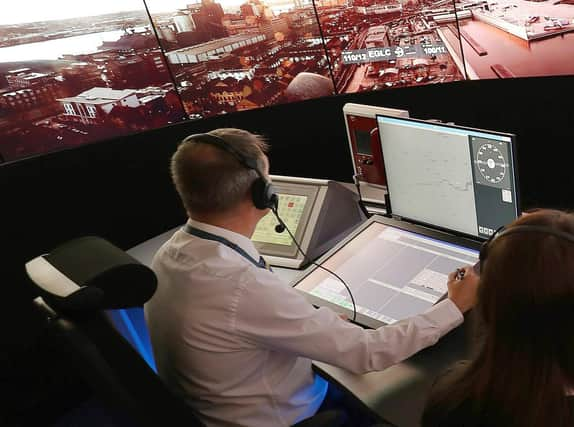London City Airport traffic now controlled remotely in Hampshire village by National Air Traffic Service


London City has become the world’s first major airport fully controlled remotely via a digital tower and a control room based in Swanwick and operated by the National Air Traffic Services provider (NATS) which are based in Whiteley.
A 50-metre tall digital control tower has been built at the airport, featuring 14 high-definition cameras and two cameras able to pan, tilt and zoom.
Advertisement
Hide AdAdvertisement
Hide AdA live feed of footage and audio from the airfield, plus radar information, is transmitted through an underground fibre optic network back to the control room where it is displayed on 14 screens.
The panoramic moving image can be overlaid with data such as aircraft call signs, altitude and speed, as well as weather readings.
NATS’ airports director Jonathan Astill said the access to information means the digital system is ‘a better tool to use in keeping aircraft apart’ than the conventional method of a controller stationed at the control tower.
He added: ‘It does enhance the controller’s ability to access data and to access information that then gives them better situational awareness.
Advertisement
Hide AdAdvertisement
Hide Ad‘A number of other airports are looking at what London City has done. It’s definitely the future.’
Jonathan has also insisted that the remote system is ‘highly resilient to a cyber attack’.
The remote tower technology was developed by Saab Digital Air Traffic Solutions and was initially tested at remote airports in Sweden.
London City’s chief operating officer Alison FitzGerald said: ‘It always raises an eyebrow from passengers when they are told about it. This isn’t about removing air traffic controllers to save costs.
Advertisement
Hide AdAdvertisement
Hide Ad‘It’s more about making it safer and making it more efficient.’
Alison also added that in future the system could potentially enable flights that would previously have been cancelled or diverted due to poor visibility to take off or land at the airport.
Construction of the multi-million-pound new tower was completed in 2019, with the switch to fully remote air traffic control taking place in January this year.
Only a handful of daily flights are operating at the airport due to the coronavirus pandemic, but Alison believes the technology will cope as demand for travel increases once restrictions are eased.
A message from the Editor, Mark Waldron
You can subscribe here for unlimited access to our online coverage, including Pompey, for 27p a day.
Comment Guidelines
National World encourages reader discussion on our stories. User feedback, insights and back-and-forth exchanges add a rich layer of context to reporting. Please review our Community Guidelines before commenting.
